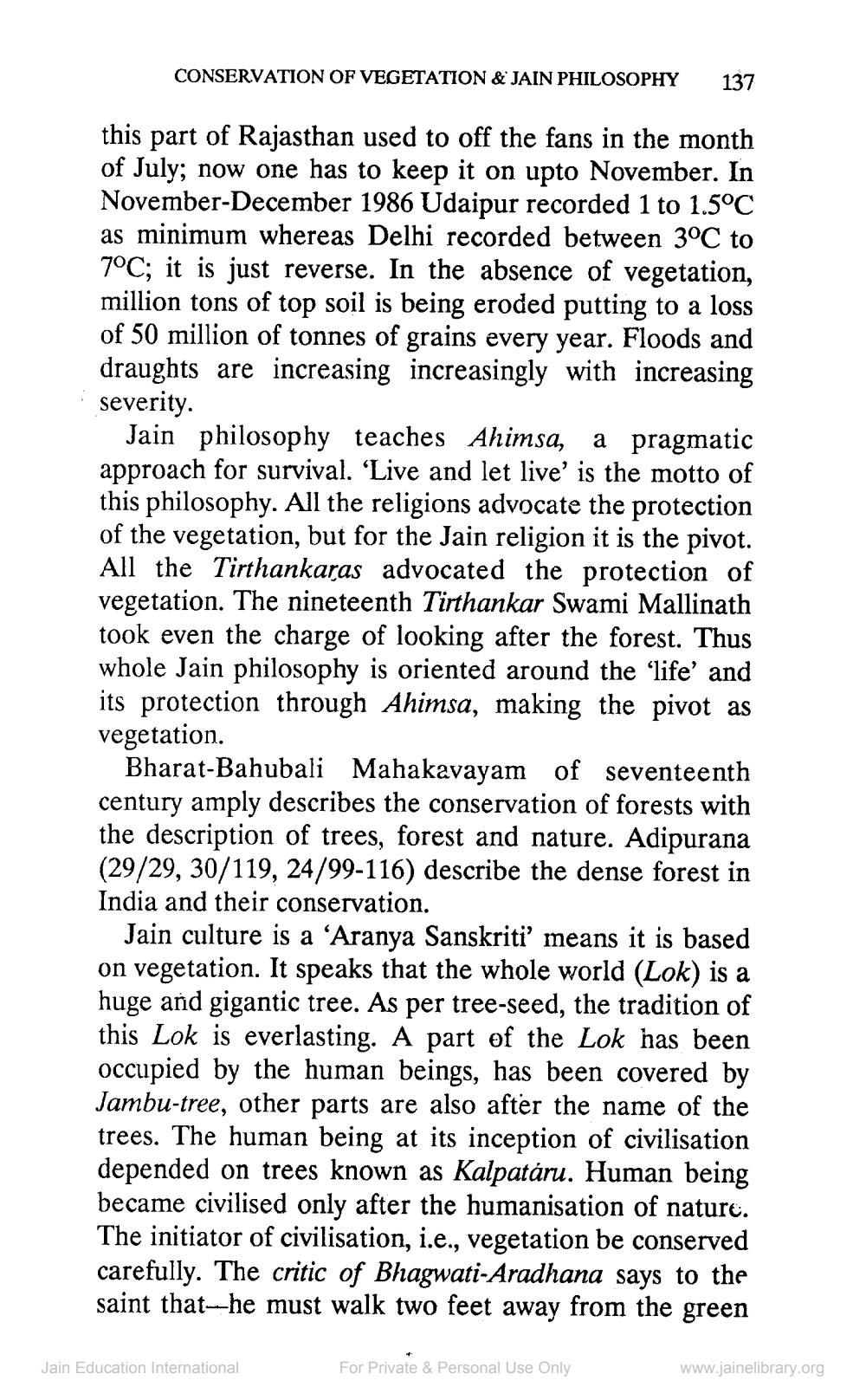________________
CONSERVATION OF VEGETATION & JAIN PHILOSOPHY
137
this part of Rajasthan used to off the fans in the month of July; now one has to keep it on upto November. In November-December 1986 Udaipur recorded 1 to 1.5°C as minimum whereas Delhi recorded between 3°C to 7°C; it is just reverse. In the absence of vegetation, million tons of top soil is being eroded putting to a loss of 50 million of tonnes of grains every year. Floods and draughts are increasing increasingly with increasing severity.
Jain philosophy teaches Ahimsa, a pragmatic approach for survival. 'Live and let live' is the motto of this philosophy. All the religions advocate the protection of the vegetation, but for the Jain religion it is the pivot. All the Tirthankaras advocated the protection of vegetation. The nineteenth Tirthankar Swami Mallinath took even the charge of looking after the forest. Thus whole Jain philosophy is oriented around the ‘life' and its protection through Ahimsa, making the pivot as vegetation.
Bharat-Bahubali Mahakavayam of seventeenth century amply describes the conservation of forests with the description of trees, forest and nature. Adipurana (29/29, 30/119, 24/99-116) describe the dense forest in India and their conservation.
Jain culture is a 'Aranya Sanskriti' means it is based on vegetation. It speaks that the whole world (Lok) is a huge and gigantic tree. As per tree-seed, the tradition of this Lok is everlasting. A part of the Lok has been occupied by the human beings, has been covered by Jambu-tree, other parts are also after the name of the trees. The human being at its inception of civilisation depended on trees known as Kalpatáru. Human being became civilised only after the humanisation of nature. The initiator of civilisation, i.e., vegetation be conserved carefully. The critic of Bhagwati-Aradhana says to the saint that-he must walk two feet away from the green
Jain Education International
For Private & Personal Use Only
www.jainelibrary.org




